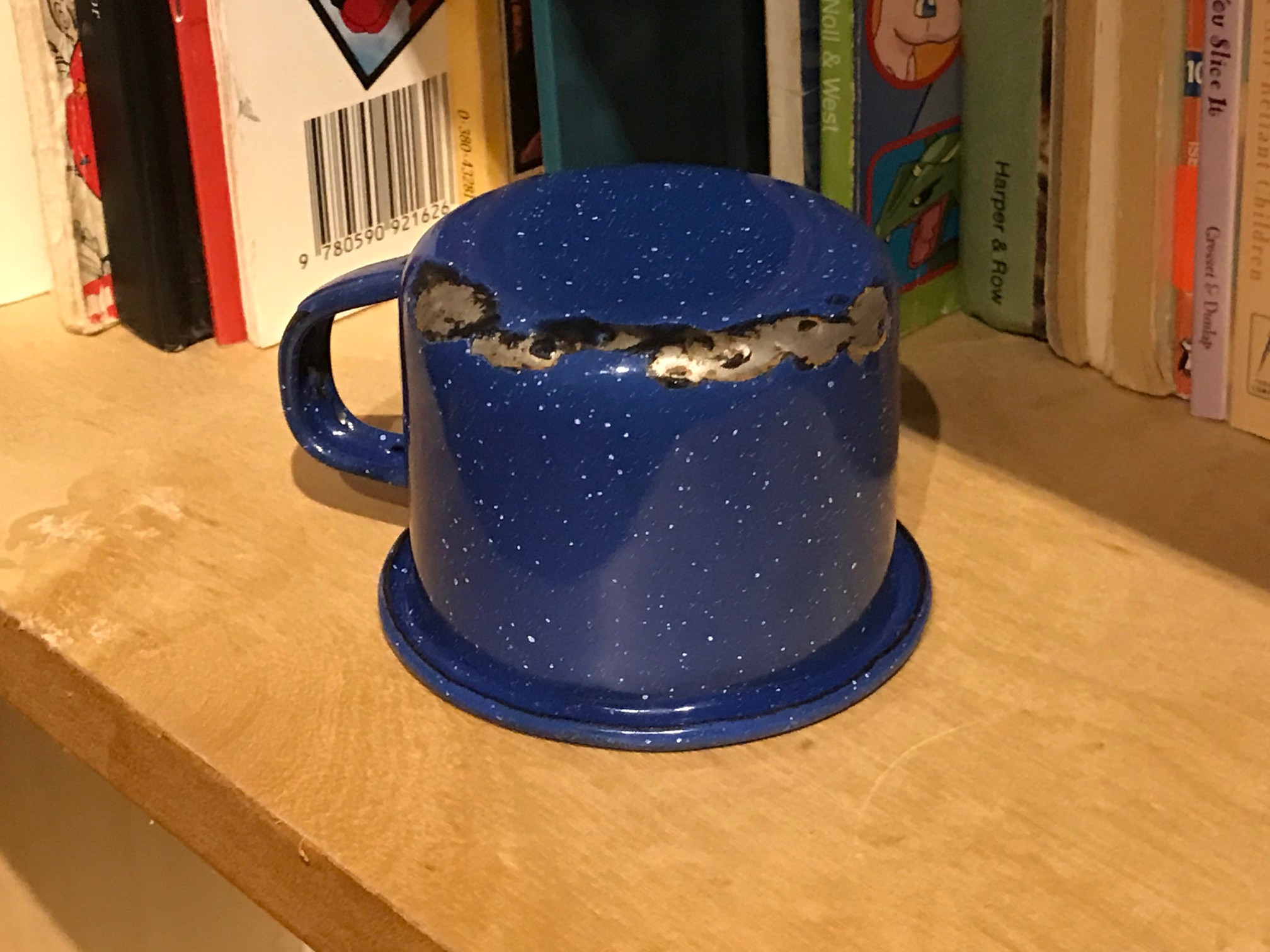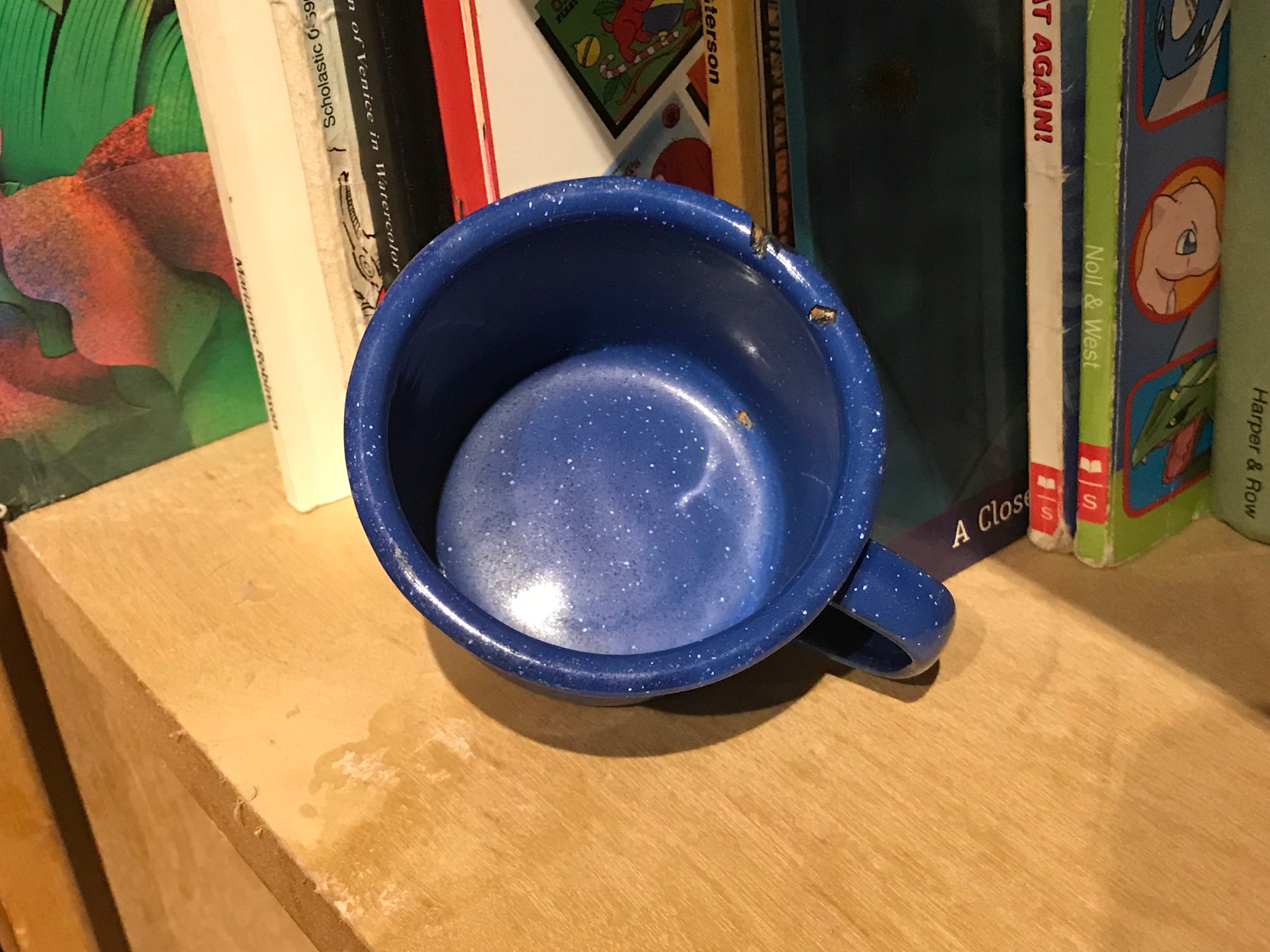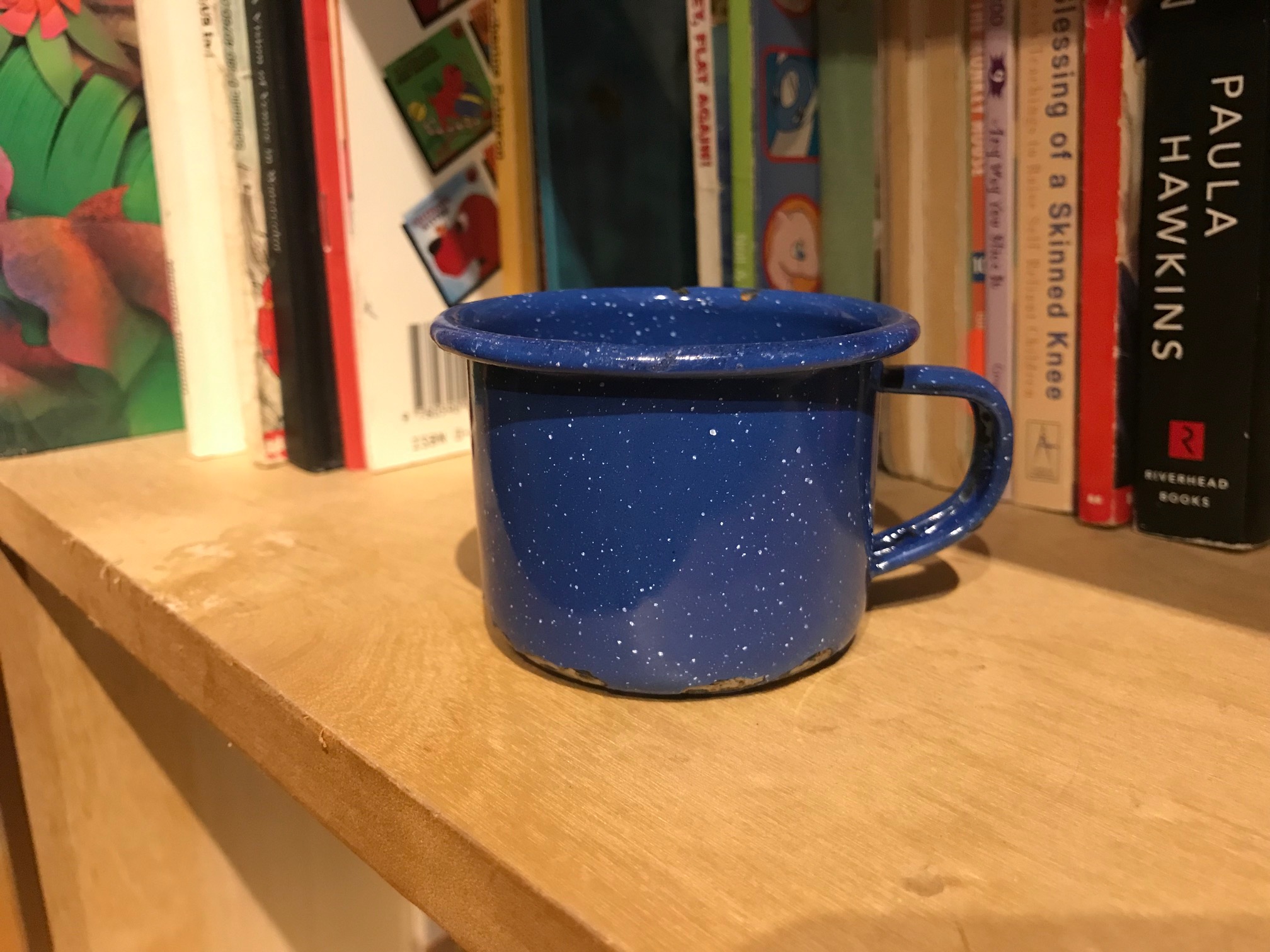Small Blue Enamelware Camping Cup / Espresso Cup: 48 ppm Lead, 63 ppm Arsenic, 137 ppm Antimony – three neurotoxins.
The pictures of this cup demonstrate how it is a perfect example of what regularly eventually happens to enamel cups with normal use. In this instance the chipping of the enamel is happening both on the outside and the inside of the cup (similar to the red one posted earlier).
This cup (and it’s red partner) clearly demonstrates why, in my opinion, enamelware should really be avoided at all costs.
To see more enamelware items I have tested, click here.
When the cup pictured was tested with an XRF instrument it had the following readings:
(Mimium 60-second test. Multiple tests done to confirm levels.)
Bottom of Red Cup
- Lead (Pb): 48 +/- 10 ppm
- Arsenic (As) 63 +/- 10 ppm
- Barium (Ba): 1,763 +/- 137 ppm
- Chromium (Cr): 1,491 +/- 131 ppm
- Antimony (Sb): 137 +/- 31 ppm
- Zinc (Zn): 3,886 +/- 83 ppm
- Copper (Cu): 157 +/- 32 ppm
- Nickel (Ni): 380 +/- 28 ppm
- Iron (Fe): 1,161 +/- 73 ppm
- Bismuth (Bi): 55 +/- 11 ppm
- Titanium (Ti): 16,400 +/- 600 ppm
The levels of Lead, Arsenic and Antimony are relatively low (compared to many other things I have tested) – but given the level of deterioration in this cup and the likelihood of it being used by a child, I would still put this in the “unsafe” category.
Instead of Enamelware for your camping trips, maybe try high quality stainless steel? or possibly Titanium? Check out some options on this link for Caveman Cups’ products.
Thank you for reading and for sharing my posts.
As always, please let me know if you have any questions.
Tamara Rubin
#LeadSafeMama
*Amazon links are affiliate links. If you purchase something after clicking on one of my links I may receive a small percentage of what you spend at no extra cost to you. Thank you for supporting my work in this way.



Never Miss an Important Article Again!
Join our Email List







Hi! I just bought a set of similar cups and dishes at a yard sale to use for our children’s outdoor mud kitchen. They do not drink or eat from them…they use them to make mud pies and mud coffee. Do you think they are okay to handle or should I throw them out?